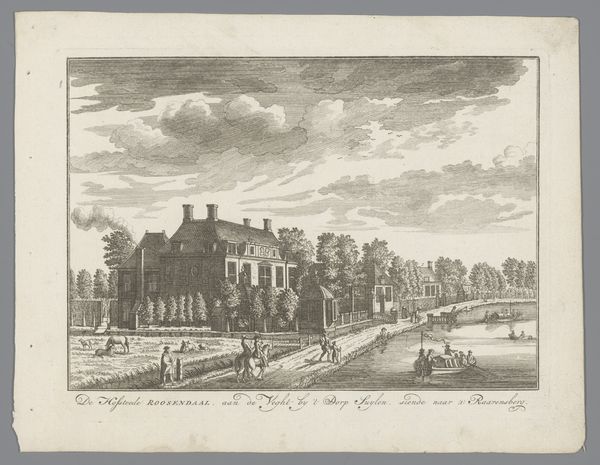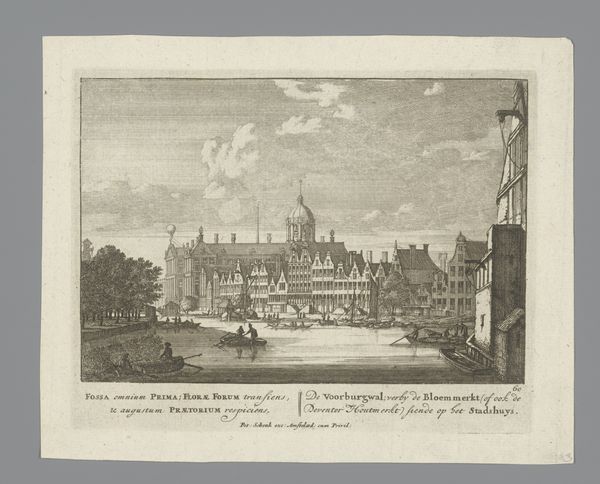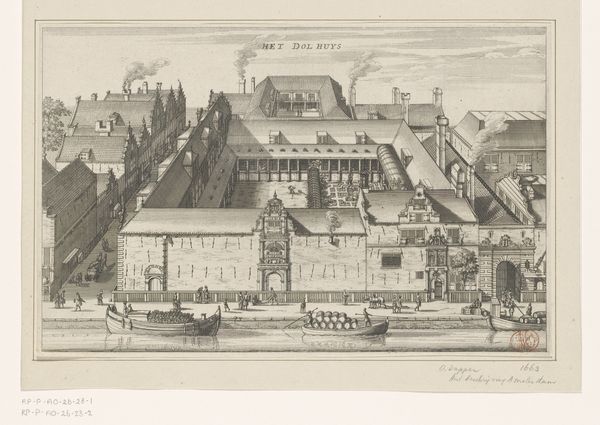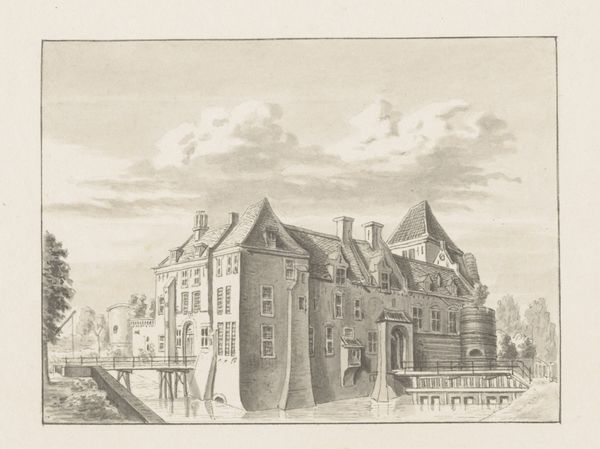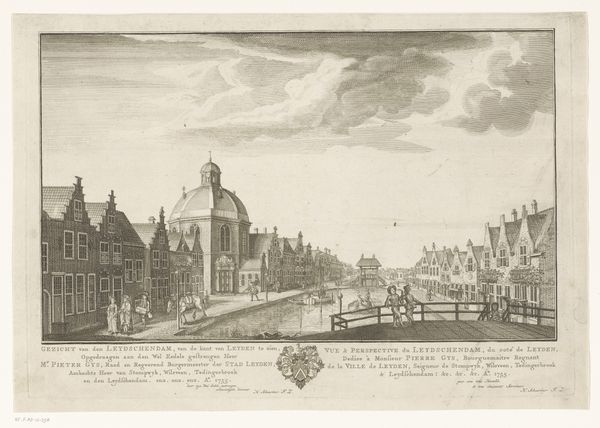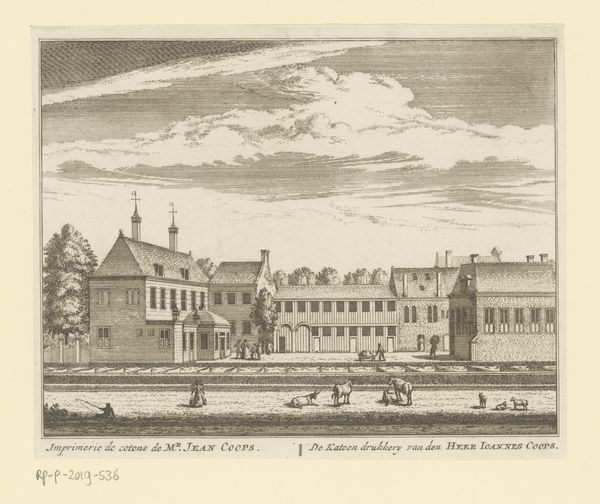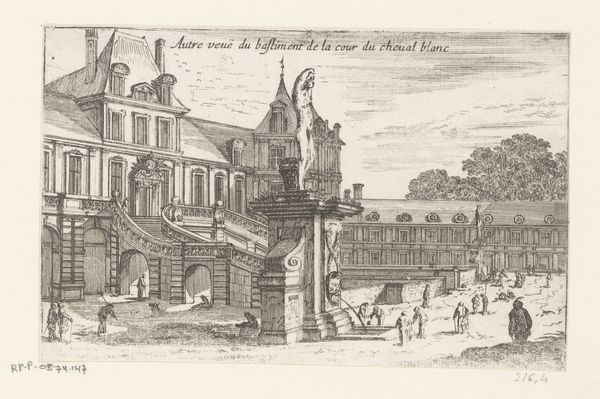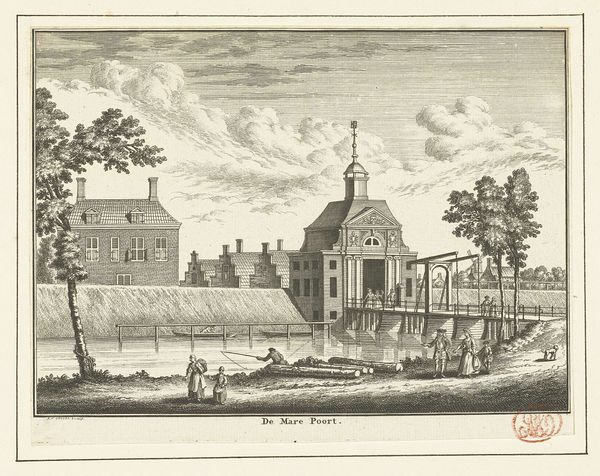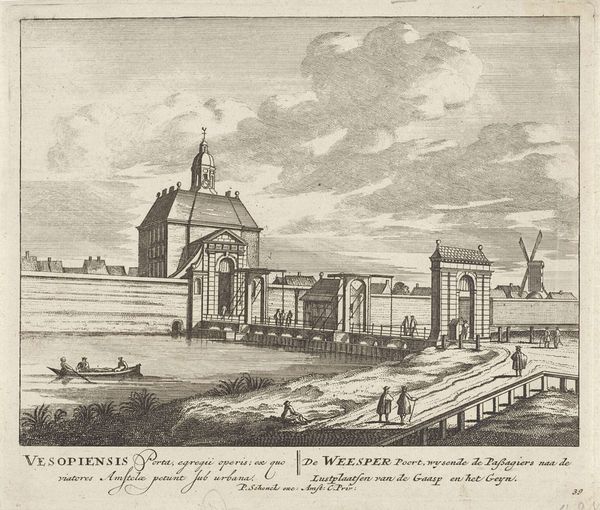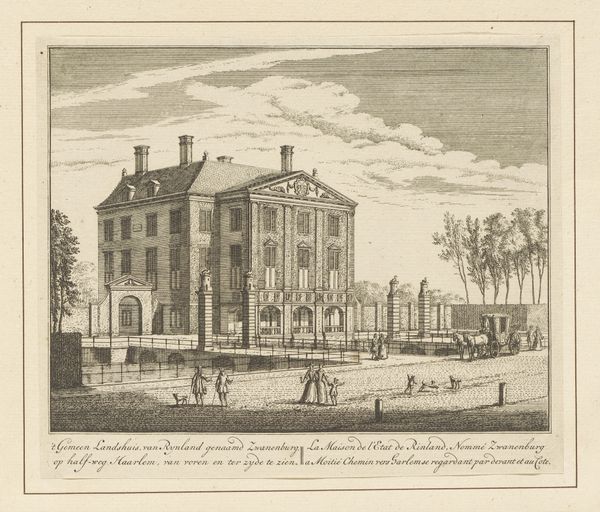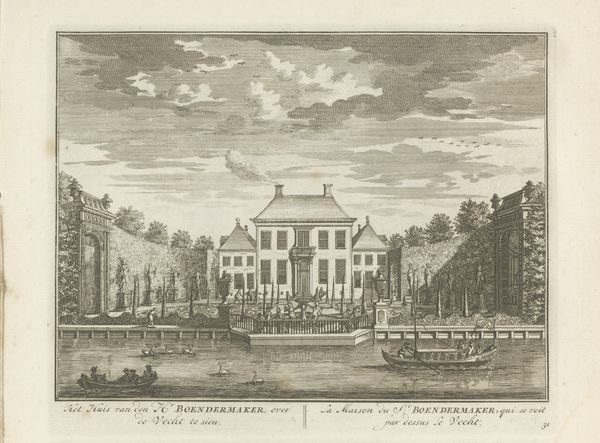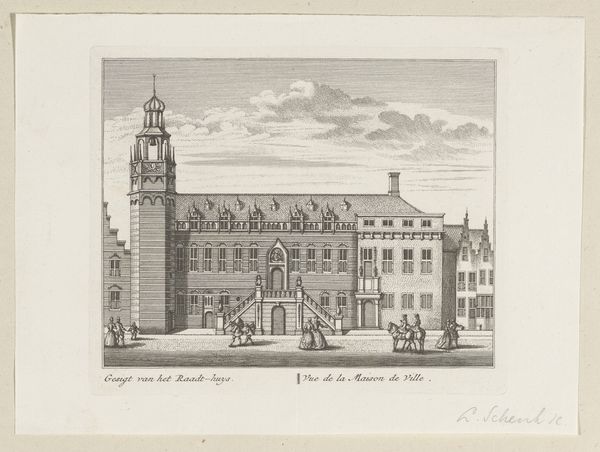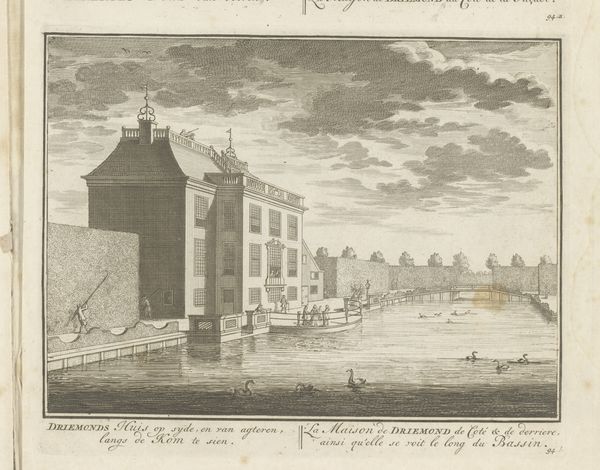
print, engraving
#
aged paper
#
toned paper
#
light pencil work
#
baroque
#
dutch-golden-age
#
parchment
# print
#
pencil sketch
#
old engraving style
#
sketch book
#
landscape
#
personal sketchbook
#
pen-ink sketch
#
pen work
#
cityscape
#
engraving
Dimensions: height 174 mm, width 199 mm
Copyright: Rijks Museum: Open Domain
Curator: Here we have "Gezicht op de Blauwpoort te Leiden," or "View of the Blue Gate in Leiden," an engraving from after 1732, currently held at the Rijksmuseum. The piece is credited to Abraham Rademaker. Editor: Immediately, it's like stepping back in time. There's this stillness, a quiet observation. You can almost hear the faint sounds of the city drifting across the water. I get a feeling that someone made this artwork on a peaceful, still afternoon in the golden age. Curator: The "Blue Gate," or Blauwpoort, functioned as a crucial point of entry, and was laden with symbolism beyond its practical use. Consider the significance of gates in general—portals between worlds, thresholds of transformation. This particular gate leads to Leiden's Collegium Pharmaceuticum, further enriching the layers of meaning here. Editor: Ah, a place of medicine! That explains some of the cool serenity to the artwork. Do you think Rademaker focused so much on architectural accuracy, because that place served a function for the broader community? It is depicted pretty squarely! Curator: Absolutely! Rademaker’s precision reflects the period’s emphasis on empirical observation, that is, to showcase structures of civic and economic significance. And beyond the surface, the presence of water in so many Dutch Golden Age artworks speaks to the lifeblood of the society. It represents not only trade and travel, but also reflection, literally and figuratively. Editor: I think so, too. Notice how softly the reflections ripple and tremble over the calm water? They are a testament to how history is written into art itself. Curator: Precisely! The "aged paper" aesthetic further heightens this sense of historical continuity. Rademaker invites us to remember and reflect on Leiden's past. The composition emphasizes stability through symmetry. Editor: Seeing a serene depiction like this always gives me a moment of respite from the daily chaos. These quiet little details remind me of stories, histories, all held within this tranquil scene. It’s as though Rademaker captured a pause in time, just for us to appreciate. Curator: Indeed. Art allows us these kinds of access points. Let's move on and find what else waits to be unlocked!
Comments
No comments
Be the first to comment and join the conversation on the ultimate creative platform.
